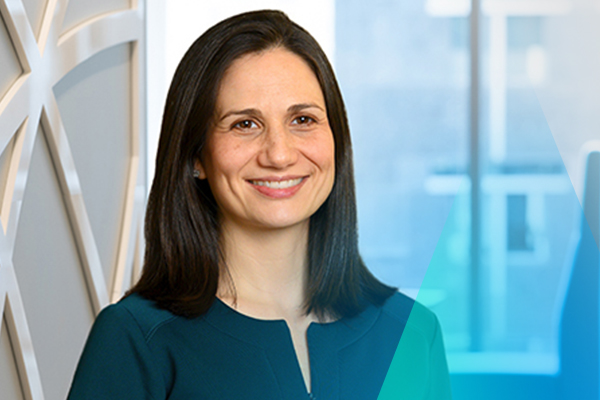Risk-Bearing ACOs Growing in Popularity Under Medicare Programs
Summary
On January 18, 2017, the Centers for Medicare & Medicaid Services (CMS) announced the new Accountable Care Organization (ACO) participants in the Medicare Shared Savings Program (MSSP) for 2017.CMS also announced additional participants in the Next Generation (Next Gen) ACO Model, which is a demonstration program tested under the authority of the Center for Medicare and Medicaid Innovation (CMMI). In 2017, 99 new ACOs will join the MSSP and 28 additional ACOs will participate in the Next Gen ACO Model. In total, 480 ACOs are now participating in the MSSP and 45 ACOs are participating in Next Gen. Among these 525 Medicare ACOs, 87 are participating in two-sided risk arrangements, a notable increase from 49 ACOs in 2016. “Two-sided” risk refers to accepting upside risk (i.e., the ability to earn bonuses or gainsharing) and downside risk (i.e., shared losses or penalties) if costs exceed a certain benchmark.
Risk-Bearing Medicare ACOs
CMS first introduced two-sided risk ACOs in 2012 through the Pioneer ACO demonstration and MSSP Track 2. The Pioneer ACO demo, which ended on December 31, 2016, included risk-bearing ACOs with greater risk than MSSP Track 2. Elements of the Pioneer demo were incorporated into MSSP Track 3 (introduced in 2016) and Next Gen. Although a majority of Medicare ACOs participate in one-sided risk arrangements under MSSP Track 1, providers are increasingly joining one of the three risk-bearing models.
Risk-bearing models are enticing due to certain model flexibilities such as the skilled nursing facility (SNF) 3-day waiver, prospective beneficiary assignment, and regional benchmarking. MSSP Track 3 and Next Gen ACOs have steadily grown since their first performance year and both models more than doubled in size from 2016 to 2017. As existing models are refined, new models are released, and programs such as the Quality Payment Program are implemented, the number of risk-bearing Medicare ACOs will continue to grow.
Quality Payment Program (QPP)
Under the QPP, clinicians sufficiently participating in Advanced APMs are exempt from the Merit-based Incentive Payment System (MIPS) and will receive a five percent Part B bonus payment. Advanced APMs include downside-risk ACOs. The 42 MSSP risk-bearing ACOs include approximately 17,500 participants (e.g., provider groups and hospitals).
CMS estimates that between 70,000 and 120,000 clinicians will receive the five percent bonus payment in 2017, with a substantial number participating in risk-bearing ACOs. ACOs will be one of the more popular and widely-adopted Advanced APM models in the coming years. CMS predicts that between 125,000 and 250,000 of eligible clinicians (up to 25 percent) in the QPP will be part of an Advanced APM in 2018. As CMS continues to refine existing ACO models and announce new ACOs with other payers (e.g., Vermont All-Payer ACO Model), providers interested in risk-bearing arrangements will look to join these ACO models and qualify as Advanced APM participants.
Future Growth
Given the proliferation and expected growth of ACOs, we expect that providers will feel increasingly comfortable with assuming financial risk in exchange for larger incentives. CMS also is committed to expanding opportunities for physician groups of different sizes and locations to participate in two-sided risk ACOs in 2018:
- CMMI will test a Medicare ACO Track 1+ model, which adopts elements of MSSP Tracks 1 and 3 and will qualify as an Advanced APM. This new model aims to incentivize small physician-led and rural ACOs to accept a smaller portion of downside risk than is available through current models.
CMMI has opened up a third round of applications for the Next Gen Model, due in part to strong interest from ACOs. - Under the QPP beginning in 2019, APM agreements between clinicians and non-Medicare payers (Medicare Advantage, Medicaid, and commercial plans) may qualify as Other Payer Advanced APMs, offering clinicians an additional avenue to receive the five percent bonus payment. Accordingly, ACO models such as the Medicare-Medicaid Accountable Care Organization (MMACO) and Vermont All-Payer ACO will serve as useful examples as to how APM agreements can be structured with other payers.
Implications
As the shift to downside risk accelerates through programs such as the QPP, a variety of stakeholders will be affected.
- Manufacturers: Life sciences companies will have more opportunity and incentive to showcase the value of their products to ACOs, particularly those in risk-bearing arrangements. As ACOs look for ways to reduce costs and better manage their patient population, data-driven insights on the effectiveness of a product will be key to successful partnerships with ACO participants.
- Health Plans: As a result of the QPP, health plans with existing ACO-like structures may adjust model components to align with the requirements of the Other Payer Advanced APM so providers will be eligible to receive the five percent bonus payment. Health plans also may look to join multi-payer payment and delivery models spearheaded by CMS (e.g., Comprehensive Primary Care Plus).
- Patients: Providers’ increasing financial stake in ACOs will incentivize greater patient-centered care and coordination between care settings to reduce cost and improve quality of care. The tighter management of patients through care management programs and different staff members will give patients more opportunity to be involved with their care and decision-making process.









